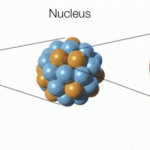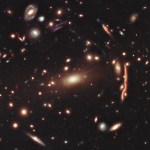quantum
You'd think that after all these years combatting quackery and blogging about science in medicine (and, unfortunately, pseudoscience in medicine) it would take a lot to shock me. You'd be right. On the other hand, Even now, 15 years after I discovered quackery in a big way on Usenet and ten years after the inception of this blog, I still have enough hope in humanity that even when I come across men like Jerry Sargeant, a.k.a. The Facilitator I am still capable of utter wonder that someone would advertise something as reprehensible and/or deluded as this. I half wondered if it were performance…
Farnsworth: "There is it. The edge of the Universe!"
Fry: "Far out. So there's an infinite number of parallel Universes?"
Farnsworth: "No, just the two."
Fry: "Oh, well, I'm sure that's enough."
Bender: "I'm sick of parallel Bender lording his cowboy hat over me!" -Futurama
Our existence here in this Universe is something that we know is rare, special, beautiful, and full of wonder.
Image credit: Kelly Montgomery.
Some things happen with amazing regularity and predictability: the occurrence of days-and-nights, the tides, the seasons, the motion of the heavenly bodies, and so much more. The…
"In any case, the number three fitted perfectly the way quarks occur in nature." -Murray Gell-Mann
You might think that we know it all, at least as far as knowing-it-all is possible. After all, we know that matter is made up of atoms, which are made up of electrons and nuclei, and the nuclei are made up of protons and neutrons, and then the protons and neutrons are made up of quarks and gluons.
Image credit: Hyak / Martin Savage, eScience Institute, University of Washington.
Along with the electrons, the quarks and gluons are -- as far as we know -- indivisible, which places them among the…
“You wait for a gem in an endless sea of blah.” -Lawrence Grossman
On the one hand, we have General Relativity, our theory of space, time, and gravity.
Image credit: Wikimedia commons user Johnstone; Earth from NASA's Galileo mission.
It describes the Universe on both large and small scales perfectly, from the hot Big Bang to our cold accelerating expansion, from vast superclusters of galaxies down to the interiors of black holes.
Image credit: NASA, ESA, M. Postman (STScI), and the CLASH Team.
But General Relativity doesn't tell us everything. It doesn't tell us, for example,…
“I asked the Zebra,
are you black with white stripes?
Or white with black stripes?
And the zebra asked me,
Are you good with bad habits?
Or are you bad with good habits?
Are you noisy with quiet times?
Or are you quiet with noisy times?
Are you happy with some sad days?
Or are you sad with some happy days?
Are you neat with some sloppy ways?
Or are you sloppy with some neat ways?
And on and on and on and on and on and on he went.
I’ll never ask a zebra about stripes...again.” -Shel Silverstein
When it comes to the classical world -- the world on a macroscopic scale -- we all feel comfortable…
If there's one thing about "alternative" medicine, "complementary and alternative medicine" (CAM), or "integrative medicine" that's always puzzled me, it's just how gullible some practitioners must think their clients are. In some cases, they might know their customers every bit as well as a car salesman knows his clients or an author knows his readers, but in actuality most people who fall for alt-med are no more gullible than average. However, some words seem to impress more than ever, as promoters of alt-med scramble to appropriate impressive-sounding science terms into their woo. I've…
"And in the end
The love you take
Is equal to the love you make." -Paul McCartney
Every once in a while, I throw the chance out there (on facebook, twitter, or google+) to ask me whatever questions you want. Yesterday, for some insane reason, I invited people across all three platforms to ask me whatever they liked, with a dual promise that I'd not only answer them, but that the best ones would receive a free "The Year In Space" calendar for 2013, courtesy of the Planetary Society.
Image credit: The Planetary Society.
So I got a ton of questions, and now I'll do my best to answer…
Note: Orac is away somewhere warm recharging his Tarial cells for further science and skepticism. In the meantime, he is rerunning some of his favorite posts. Because it's vacation, he thought he'd rerun a fun post. He needs it; vacation is almost over, and it's back to work on Monday. So, here's one from 2007, which means that if you haven't been reading at least that long it's new to you—unless, of course, I reran it once and forgot about it. Besides, it's the post that introduced me to the woo-tastic wonder that is "Professor" Bill Nelson.
I admit it.
I'm a gadget freak. I sometimes think…
Note: Orac is away somewhere warm recharging his Tarial cells for further science and skepticism. In the meantime, he is rerunning some of his favorite posts. Because it's vacation, he thought he'd rerun a fun post. He needs it; vacation is almost over, and it's back to work on Monday. So, here's one from 2007. I believe I reran it once a few years ago, but it's been at least three years, which means that if you haven't been reading at least that long it's new to you. Besides, it's the post that introduced me to the woo-tastic wonder that it Lionel Milgrom.
While thinking about ways to make…
1 And the LORD looked upon the earth, and, behold, it was corrupt; for all flesh had corrupted his way upon the earth.
2 And the LORD said unto Noah, The end of all flesh is come before me; for the earth is filled with violence through them; and, behold, I will destroy them with the earth.
3 Make thee an ark, and this is the fashion which thou shalt make it of: The length of the ark shall be three hundred qubits, the breadth of it fifty qubits, and the height of it thirty qubits.
4 And Noah asked the LORD, What is a qubit?
5 And the LORD replied unto Noah, A qubit is a two-level quantum…
It's been a long and brutally busy week here, so I really ought to just take a day off from blogging. But there's a new paper in Science on quantum physics that's just too good to pass up, so here's a ReasearchBlogging post to close out the week.
Aw, c'mon, dude, I'm tired. What's so cool about this paper that it can't wait until next week? Well, the title kind of says it all: they measured the average trajectories of single photons passing through a double-slit apparatus. By making lots of repeated weak measurements at different positions behind the slits, they could reconstruct the average…
If I ever decided to abandon any pretense of integrity or credibility, and just shoot for making a bazillion dollars peddling quantum hokum, the particular brand of quantum philosophy I would peddle has already been laid out, in Robert Charles Wilson's Divided by Infinity. In the story, the narrator is given a copy of a "crank book" by Carl G. Soziere, titled You will Never Die, which makes an argument that is essentially a variant of the Many-Worlds Interpretation of quantum mechanics:
And the argument was seductive. Shorn of the babble about Planck radii and Prigogine complexity and the…
While Kenneth Ford's 101 Quantum Questions was generally good, there was one really regrettable bit, in Question 23: What is a "state of motion?" When giving examples of states, Ford defines the ground state as the lowest-energy state of a nucleus, then notes that its energy is not zero. He then writes:
An object brought to an absolute zero of temperature would have zero-point energy and nothing else. Because of zero-point energy, there is indeed such a thing as perpetual motion.
This is really the only objectionable content in the book, but he certainly made up in quality what it lacks in…
While I've got a few more review copies backlogged around here, the next book review post is one that I actually paid for myself, Lawrence Krauss's Quantum Man: Richard Feynman's Life in Science, part of Norton's Great Discoveries series of scientific biographies. I'm a fan of the series-- past entries reviewed here include Richard Reeves's biography of Rutherford, Rebecca Goldstein's biography of Goedel, and David Foster Wallace on Cantor's work on infinity (which is less of a biography than the others). I'm not a huge reader of biographies, but I've liked all the books from this series that…
In comments to yesterday's post about precision measurements, Bjoern objected to the use of "quantum mechanics" as a term encompassing QED:
IMO, one should say "quantum theory" here instead of "quantum mechanics". After all, what is usually known as quantum mechanics (the stuff one learns in basic courses) is essentially the quantization of classical mechanics, whereas QED is the quantization of classical electrodynamics, and quantum field theories in general are quantizations of classical field theories. I think saying "quantum mechanics" when one talks about something which essentially has…
Sean Carroll and Brad DeLong have each recently asserted that relativity is easier to understand than quantum mechanics. Both quote Feynman saying that nobody understands quantum mechanics, but Sean gives more detail:
"Hardness" is not a property that inheres in a theory itself; it's a statement about the relationship between the theory and the human beings trying to understand it. Quantum mechanics and relativity both seem hard because they feature phenomena that are outside the everyday understanding we grow up with. But for relativity, it's really just a matter of re-arranging the concepts…
I've mentioned before that I'm answering the occasional question over at the Physics Stack Exchange site, a crowd-sourced physics Q&A. When I'm particularly pleased with a question and answer, I'll be promoting them over here like, well, now. Yesterday, somebody posted this question:
Consider a single photon (λ=532 nm) traveling through a plate of perfect glass with a refractive index n=1.5. We know that it does not change its direction or other characteristics in any particular way and propagating 1 cm through such glass is equivalent to 1.5 cm of vacuum. Apparently, the photon…
Today is the official release date for the paperback edition of How to Teach Physics to Your Dog, so I wanted to write up something cool about quantum physics to mark the occasion. I looked around the house for inspiration, and most of what we have lying around the house is SteelyKid's toys. Thus, I will now explain the physics of quantum teleportation using SteelyKid's toys:
"Wait, wait, wait... You're not seriously planning to explain something quantum without me, are you?"
"I could hardly expect to get away with that, could I. No, I'm happy to have your contributions-- the book is about…
Earlier this week, I talked about the technical requirements for taking a picture of an interference pattern from two independent lasers, and mentioned in passing that a 1967 experiment by Pfleegor and Mandel had already shown the interference effect. Their experiment was clever enough to deserve the ResearchBlogging Q&A treatment, though, so here we go:
OK, so why is this really old experiment worth talking about? What did they do? They demonstrated interference between two completely independent lasers, showing that when they overlapped the beams, the overlap region contained a pattern…
SteelyKid, like most toddlers, knows a few songs, and likes to sing them over and over. Her repertoire is limited to "ABCDEFG" (the alphabet song, but that's how she requests it), "Twinkle, Twinkle," "Some man" ("This Old Man," which I only figured out this weekend), and "Round and Round" ("The Wheels on the Bus"). I get a little bored with the repetition, and so tend to make up my own verses, which get sideways looks from her, followed by telling Kate "Daddy's silly!"
I've been posting a lot of these on Twitter over the past several days (@orzelc), but for posterity, a few physics-related…





